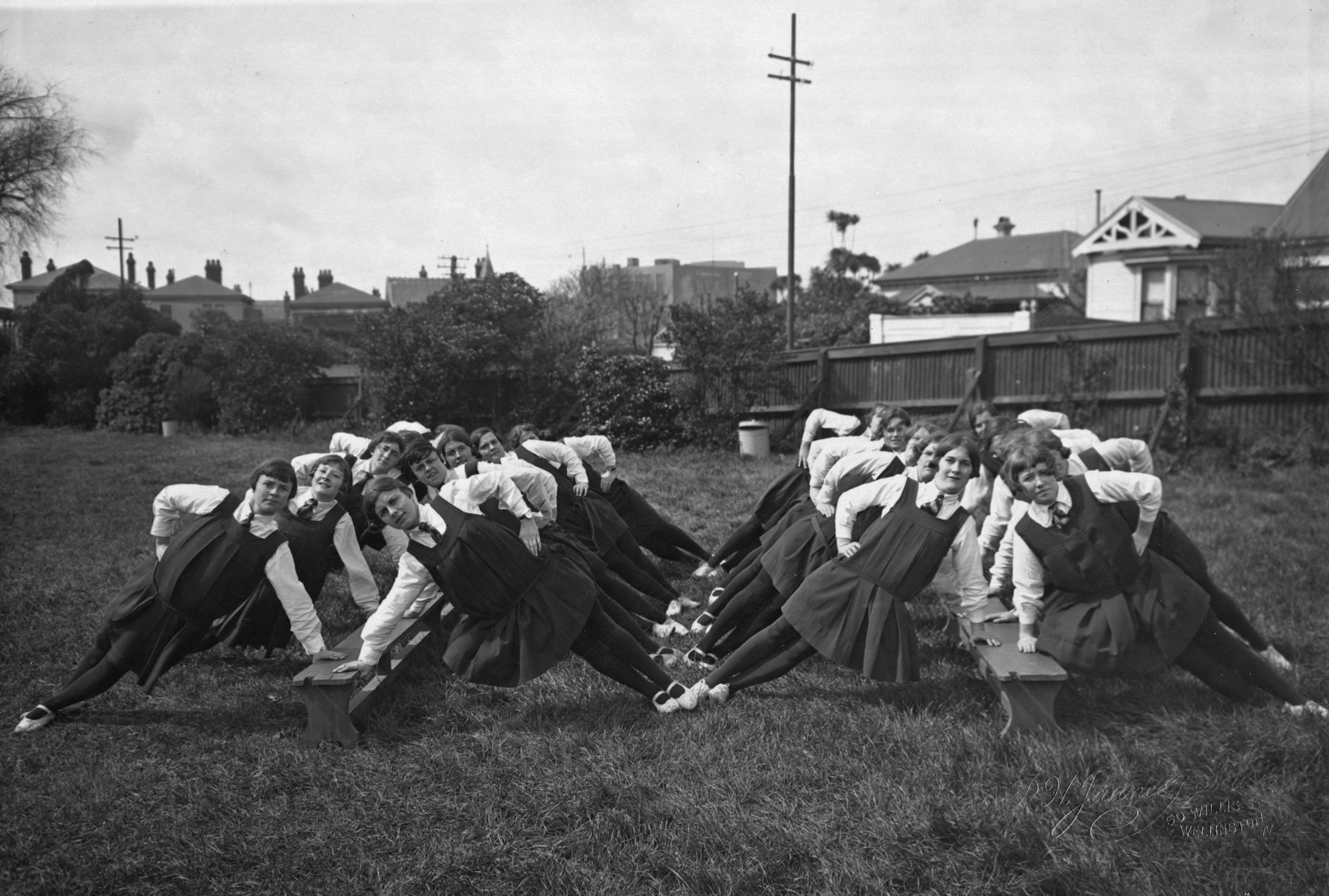
By the 1920s Swedish drill was seen as the state of the art in girls’ physical education. By the 1930s it was seen as old-fashioned, but the flexing, lunging and balancing movements are not dissimilar to some exercise programmes today, and the loose tunics worn here were certainly an improvement on the restrictive clothing these girls’ mothers would have had to wear for any outdoor activity.
Less modern was the strict regimentation. In the years between the wars such military-like manoeuvrings were a popular part of organised activity for the young. In the same year as this photograph was taken, the outdoor highlight for many Wellington schoolchildren was a tightly choreographed welcome to the Duke of York at Newtown Park, where they formed themselves into a living Union Jack. Other examples of uniformed mass choreography for young people included the uniquely New Zealand phenomenon of marching girls that emerged in the 1930s.
Mrs Taylor, the head of the physical training programme at Wellington Girls’ College, was an innovator, though. In particular she ignored some of her how-to-do-drill textbooks and enjoyed mixing her Swedish drill instruction with music and dance.
The girls in this photograph no doubt also took part in one of the highlights of the school year – the annual ‘gymnastic display’ organised by Mrs Taylor in one of the city theatres. In 1927 it was at the Opera House. In addition to Swedish drill, the newspaper advertisements promised “Lantern marching, Cymbals, Wands, Poi Dances, Spanish Dances, Thunder, Rain and Frost”, all of which were somehow worked into a “Fairy Folk Tales of the Maori” theme, based on James Cowan’s recently published children’s book of the same name.
The Evening Post reviewer was a little bemused by that rather slight plot line, but reported loud applause from a large audience, and demands for an encore after the “delightful rhythm” of the canoe poi performed by the girls from Form V and Form IV’s Spanish dance.




